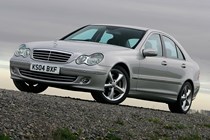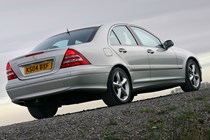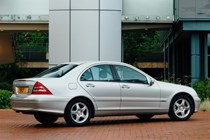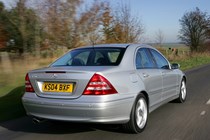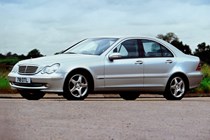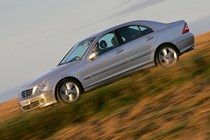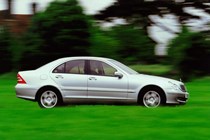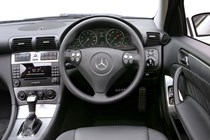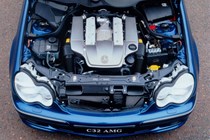
Mercedes-Benz C-Class Saloon (2000-2007) engines, drive and performance
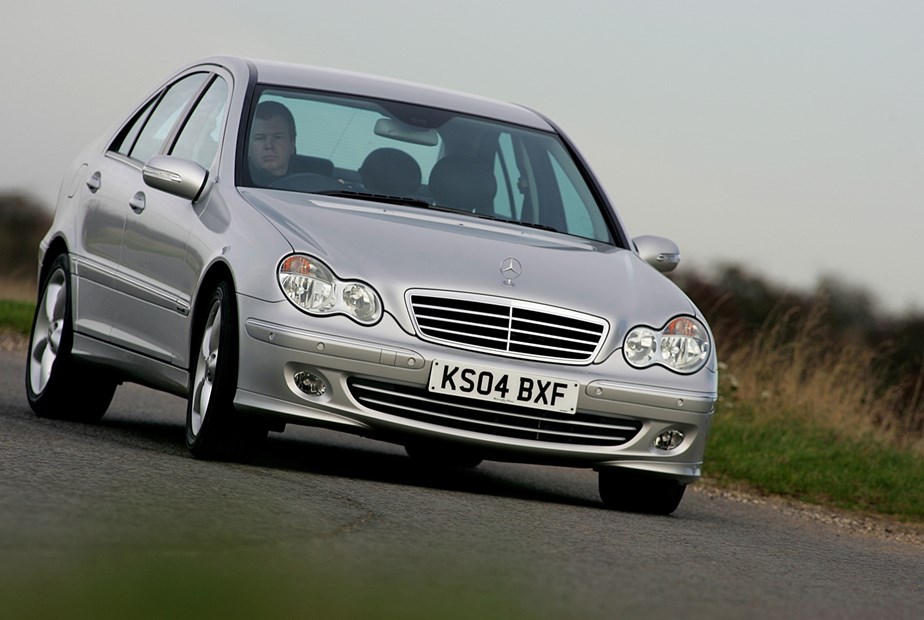
From 2000 to 2002 the C-Class range started at the lower end with two 2.0-litre petrol engines. The C180 had a 129bhp version of the engine (later upgraded to 143bhp), while the C200 had a 163bhp version. These were both thirsty and were replaced from summer 2002 by a choice of more efficient supercharged 1.8-litre engines offering 143bhp and 163bhp and much better fuel consumption in the C180 Kompressor and C200 Kompressor.
The refined 170bhp 2.6-litre V6 in the C240 was stopped in 2004 with the UK market favouring a 192bhp supercharged 1.8-litre in the C230 Kompressor. This engine had already been available since 2000 in the C-Class Sport Coupe. The C320 uses a 218bhp V6, but this was replaced early in 2005 by a 204bhp C280 and a more potent 272bhp C350. The C-Class launched with just one diesel option in 2000: the C220 CDI, offering 143bhp.
A five-cylinder C270 CDI was launched in 2001 with 170bhp and 295-lb ft. Both offer a good balance of performance and fuel economy – even the autos are frugal. An entry-level diesel engine was launched in 2004: the C200 CDI is a less powerful version of the 2.2-litre diesel engine in the C220 CDI. Meanwhile that engine was upgraded to 150bhp at the same time.
In 2005 a 3.0-litre V6 diesel was offered instead of the C270 CDI. This engine develops 224bhp and is a true high-performance diesel. Most C-Classes seem to drive better with automatic transmissions. In fact the manual transmissions offered before 2004 were pretty poor, with awkward gearchanges and were often less fuel-efficient than the autos. When the range was revised in 2004 new manual gearboxes came in that has a shorter and more precise shift action.
As an option customers could also specify an even shorter shift. However, it is still unlikely that there would be many of these around as the used market still favours automatics.
The C-Class is an accomplished car on the road with accurate and fairly direct steering. Being rear-wheel drive, steering input isn’t corrupted by front wheels putting the power down as they might be in an Audi A4 Avant or Volvo V50. While the standard car is relatively sharp and quite comfortable, lowered sports suspension is an option on the C-Class.
Choosing it results in more grip but a rather firmer ride. Electronic stability control is fitted as standard. This safety feature detects when the car is skidding – perhaps as a result of a sudden direction change or driving on a slippery surface – and uses the ABS system to brake individual wheels until the car is back on course, and can help avoid accidents.



